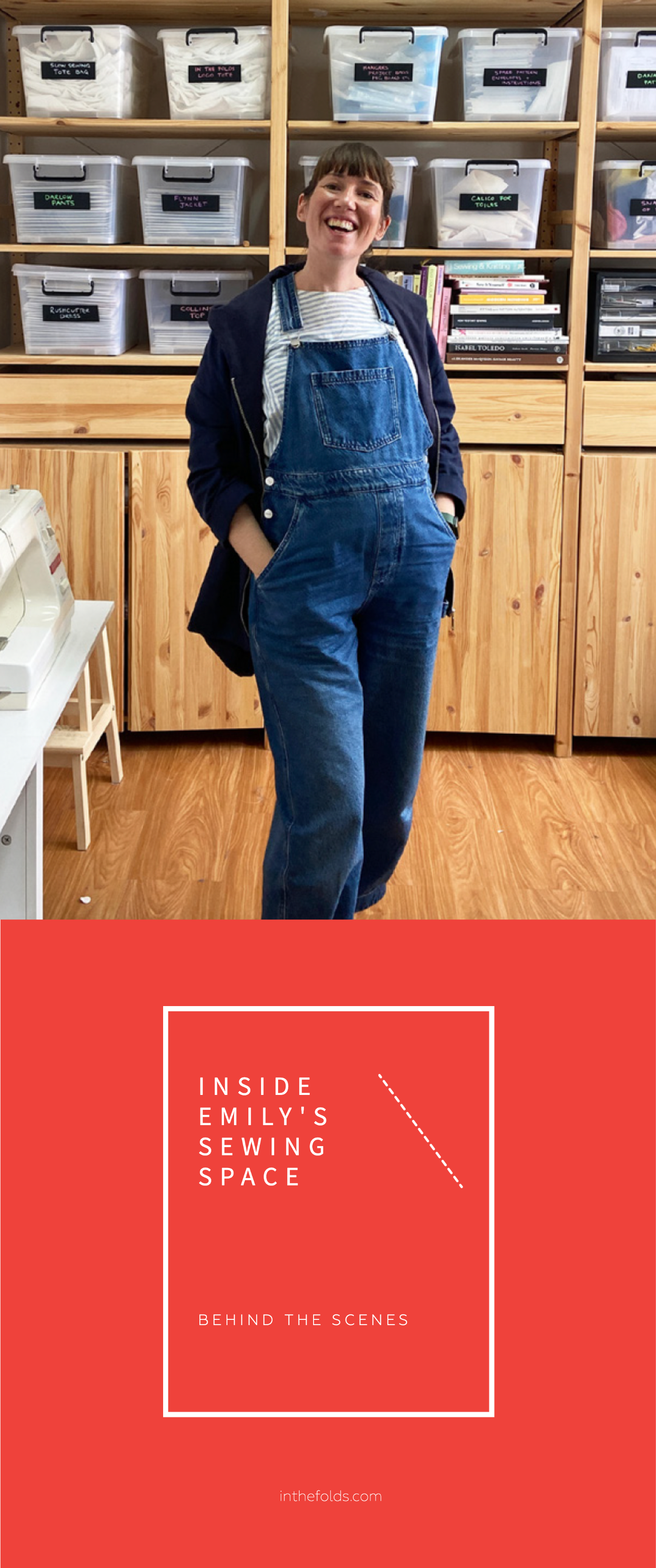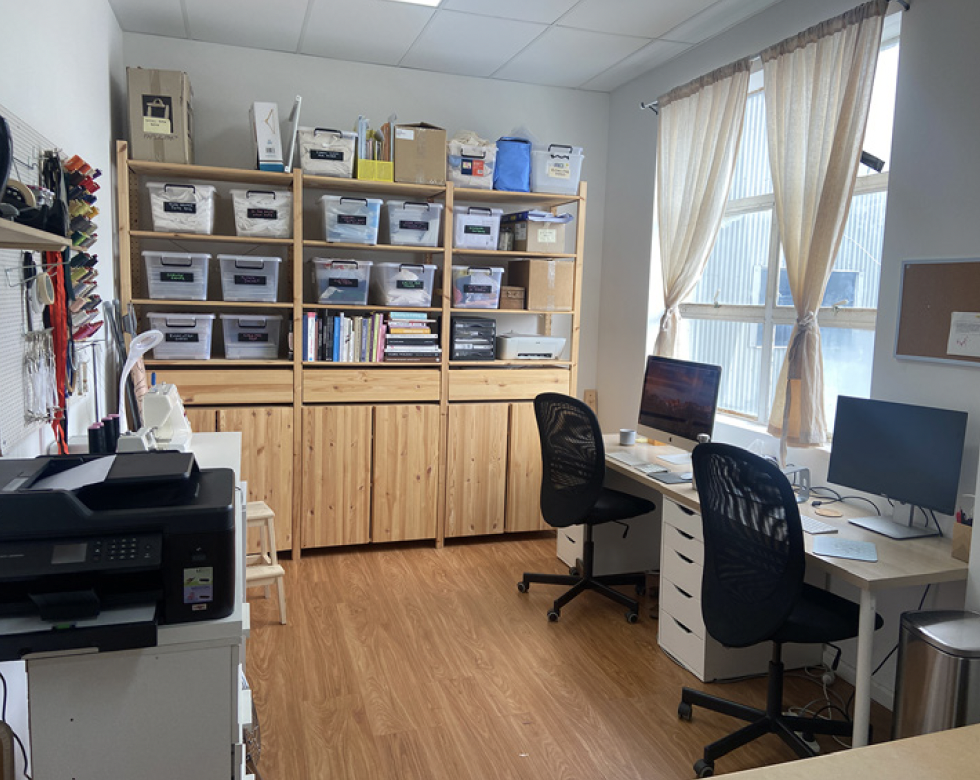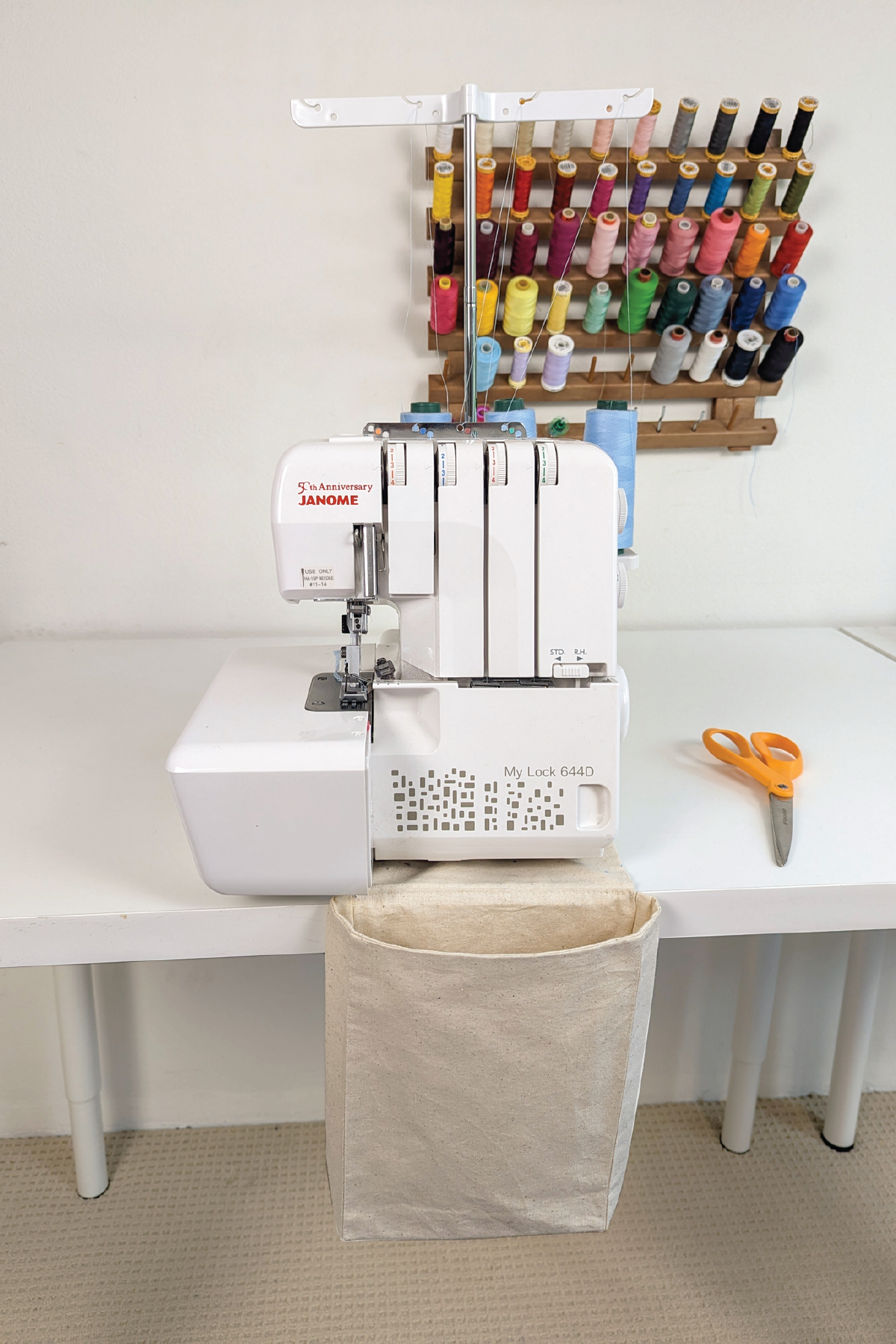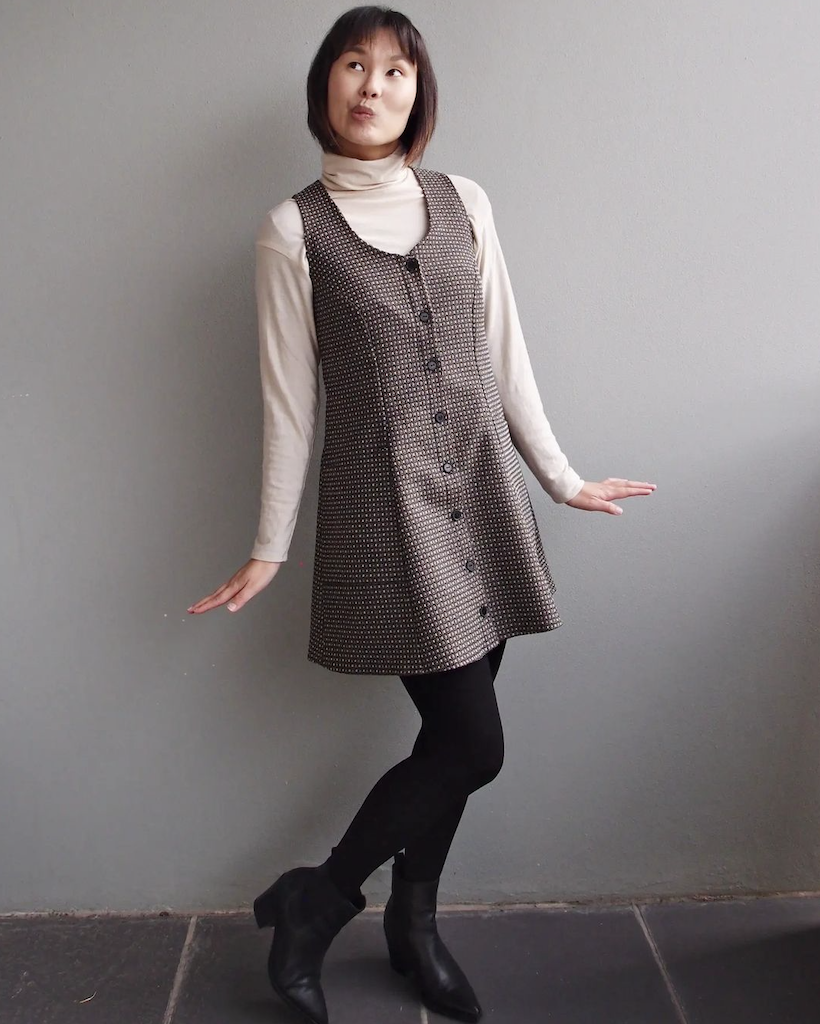When we’re organising our own sewing space it can be helpful to see how others set their areas up. It gives us inspiration and ideas, and often triggers creative solutions for storage problems we might be facing. (That’s why we’ve all got so many Pinterest boards, after all! *wink wink*)
We thought you might like to see how Emily has set up her new(ish) sewing studio. Even though it’s where she operates her business from and you may be sewing for pleasure, a limited budget means that she has had to be creative with her approach. And we can all relate to that, right!?
Come with us as we take a peek inside Emily’s sewing studio!
tell us about your sewing space
I have a studio in a large, creative space with over 20 other artists and creatives. I enjoy having other creative people around to have lunch and a chat with. Running a small business can be lonely, so working in a space like this is a nice way to make sure I don’t go a whole day without talking to anyone!
My studio is a good size, with big windows down one end that make the space lovely and bright.
I have set up the space so it can be multi-use as there a lots of different parts to my business. I need a comfortable computer set-up as I spend most of my working hours at a computer; sewing space with notions and tools within easy reach; as well as a large patternmaking and cutting table.
Storage is also really important as I have lots of fabric for sampling and paper patterns to store.
Join Curated by ITF - find your new community!
If you're looking to be supported, motivated and inspired through your sewing journey our Curated by ITF subscription might be just what you're looking for.
As well as a monthly sewing project, you’ll gain access to our private member platform where you can receive feedback and advice from the ITF team and other experienced makers, participate in sew-alongs and make sewing besties all over the world!
WHAT’S IMPORTANT FOR YOU IN A SEWING SPACE?
It’s really important for me to be well organised so I can find what I need quickly and easily.
I’ve always loved the idea of designing spaces to maximise comfort and efficiency so things just work without you having to think too much about it. For me, this means having my most frequently used tools out on the table and having patternmaking paper within easy reach.
I find a pegboard the easiest way to see exactly where everything is, rather than rummaging through a drawer.
For a sewing space to be functional I want as few hurdles as possible in my way, so tidying up at the end of each day or sewing/cutting session is high priority!
ANY TIPS FOR MAXIMISING SPACE?
Yes! Here you go:
Hang patterns on a clothes rack. When I didn’t have a studio space I used to hang them in my wardrobe! It’s a great way to keep patterns flat, with the added bonus of being easy to flick through whenever I’m looking for a particular pattern. Using specifications sheets (like the one included in our Curated by ITF Organise Your Stash issue) attached to the front makes it even easier to keep track of what’s in my pattern stash.
Take advantage of vertical space. Using wall shelves is a great way to create extra storage space without making a room feel cluttered. It also means things are within easy reach and there is less bending down and rummaging through messy drawers!
Have a little bin, thread catcher or even just a bowl on your sewing table at all times. Having somewhere to throw all those threads and fabric trimmings is a game changer! When I started doing this I couldn’t believe how much I was collecting each day. Before this it all just ended up on the floor, which meant I had to vacuum after every sewing session.
Keep the fabric stash to a minimum. This one is easier said than done, I know! We all love to buy the pretty fabric, but it’s something I’m always striving for. I like to only buy fabric when I have a specific project in mind. Due to the nature of my business I do need to have some fabric on hand, but I am careful to make sure it’s practical and likely to be used. I love hunting for pre-loved fabric in local charity shops, so sometimes this rule is difficult to stick to!
Happy organising!


















